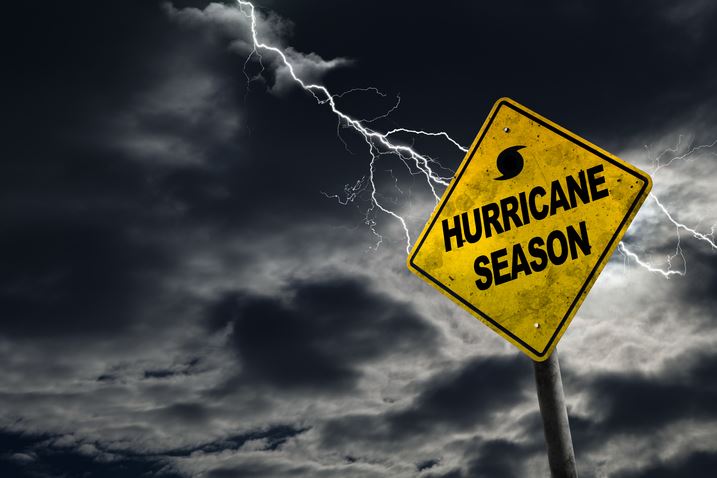Hurricane season runs from June 1 through November 30 in the Atlantic Ocean. According to the National Hurricane Center, the Atlantic Ocean averages 12 tropical storms and 6 hurricanes, 2 of which become major hurricanes in a given season. A “major” hurricane is defined as a Category 3 or higher storm on the Saffir-Simpson Scale with sustained winds of 111 mph or greater around the center. A Category 1 hurricane has sustained winds of 74 – 95 mph, while a Category 5 hurricane features sustained winds of 156 mph or greater.
Although hurricane season spans half the year in the Atlantic Ocean Basin (that includes the Gulf of Mexico and Caribbean Sea), September is the busiest month. That’s when conditions tend to be the most favorable. Tropical storms and hurricanes require two key ingredients to develop: 1) ocean water of at least 80 degrees; and 2) a lack of wind shear. Tropical storms require calm winds in the surrounding environment to intensify, so wind shear (or winds that change direction with altitude) would interrupt the structure of the storm.
The National Hurricane Center, in Miami, Florida, tracks all tropical storms and hurricanes in the Atlantic Ocean and eastern Pacific Ocean. They will soon issue their seasonal forecast. Meanwhile, meteorologists at Colorado State University have issued their forecast for the 2017 Atlantic hurricane season. They are expecting a slightly below average season with 11 tropical storms, 4 hurricanes and 2 major hurricanes. Some factors that scientists look at when issuing tropical forecasts are the presence of El Nino or La Nina, which can influence sea surface temperature and the amount of wind shear.
This prediction does not take into account the first tropical storm of the season, Arlene, which developed late last month. Arlene was only the second named storm on record to develop in the Atlantic Ocean during the month of April. When a tropical storm develops with sustained winds of 39 mph, it gets a name. When sustained winds reach 74 mph, the tropical storm is upgraded to hurricane status.
There are six lists of hurricane names kept by the World Meteorological Organization and they are recycled every six years. For example, the 2017 list was last used in 2011. The only exception is when an exceptionally damaging or deadly storm occurs and its name is retired. Hurricane Irene was a very damaging storm in 2011 and its name was replaced with the name “Irma” for this season.
The overall number of tropical storms and hurricanes isn’t as significant a factor as whether or not any make landfall. For instance, the 2010 hurricane season was an active one with 19 tropical storms, 12 hurricanes and 5 major hurricanes. However, the United States didn’t feel any direct impacts from a hurricane in 2010. Meanwhile, the 1983 hurricane season had only 4 tropical storms, 3 hurricanes and 1 major hurricane. But, Hurricane Alicia, a major Category 3 hurricane, made landfall in Texas and caused a great deal of damage.
You can count on the WUSA9 weather team to provide the latest tropical weather updates during the upcoming hurricane season.
RELATED LINKS:


